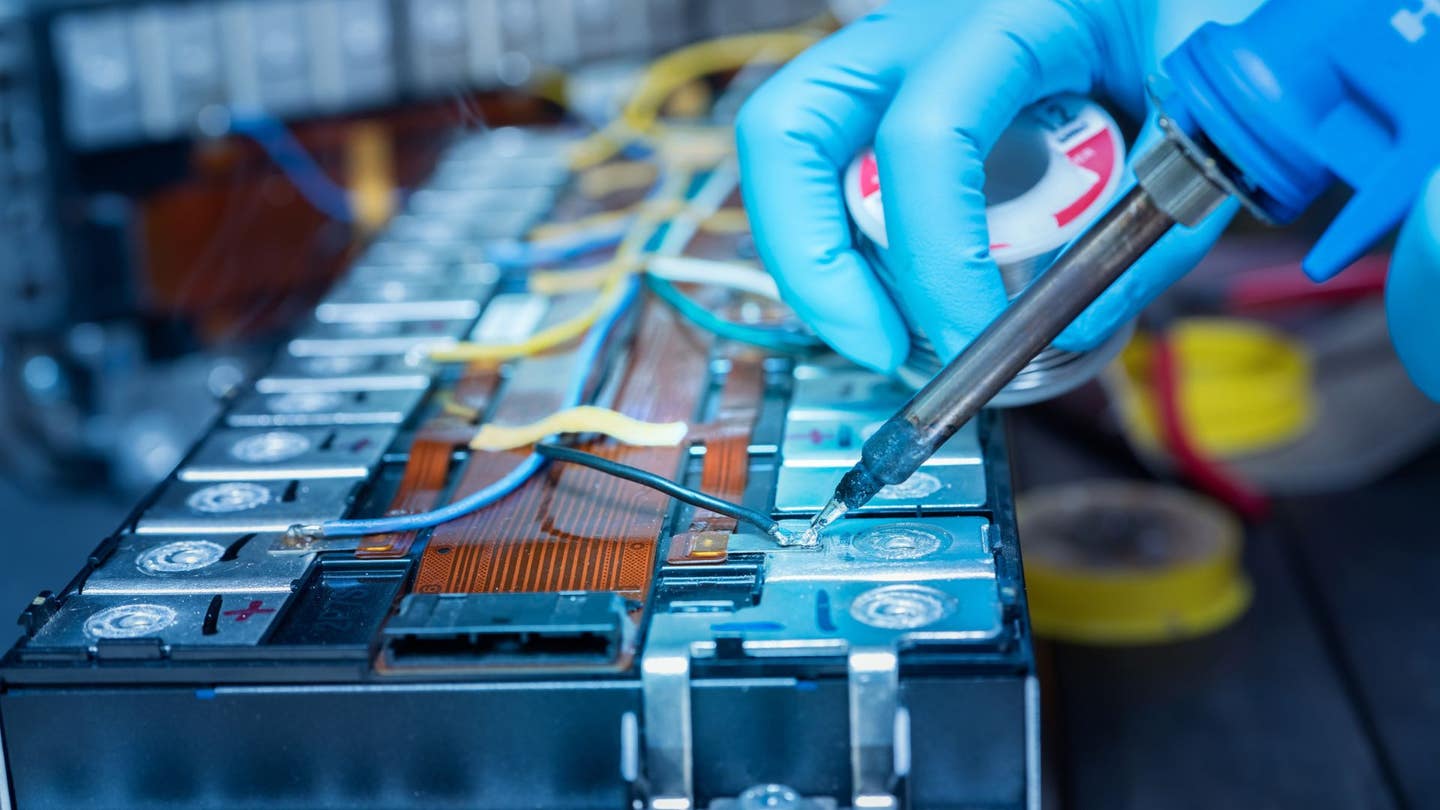Revolutionary lithium battery charges in under 5 minutes – eliminating EV range anxiety
New lithium battery is capable of charging in under five minutes, setting a new speed record in the battery market.

In a groundbreaking achievement, engineers at Cornell University have unveiled a lithium battery capable of charging in under five minutes, setting a new speed record in the battery market while maintaining stability over numerous charge and discharge cycles.
This breakthrough has the potential to alleviate the dreaded "range anxiety" that plagues electric vehicle (EV) owners concerned about the time-consuming recharging process.
The driving force behind this remarkable innovation is Professor Lynden Archer, dean of Cornell's College of Engineering, who passionately stated, "Range anxiety is a greater barrier to electrification in transportation than any of the other barriers, like cost and capability of batteries, and we have identified a pathway to eliminate it using rational electrode designs." Archer's team has successfully found a solution to a problem that has been haunting EV enthusiasts and automakers for years.
The research, titled "Fast-Charge, Long-Duration Storage in Lithium Batteries," was published in the esteemed scientific journal Joule. The lead author, Shuo Jin, a doctoral student in chemical and biomolecular engineering, played a pivotal role in this groundbreaking project.
Related Stories:
Lithium-ion batteries have long been favored for powering electric vehicles and smartphones due to their lightweight nature, reliability, and energy efficiency. However, the drawback has always been their slow charging times and limited capacity to handle high currents.
The Cornell engineers pinpointed indium as a material with exceptional promise for fast-charging batteries. Indium, a soft metal commonly used for making touch-screen displays and solar panels, exhibited two crucial characteristics as a battery anode.
Firstly, it boasted an extremely low migration energy barrier, which determines the rate at which ions move within the solid state. Secondly, it displayed a modest exchange current density, which is related to the speed at which ions are reduced in the anode. This unique combination of traits – rapid diffusion and slow surface reaction kinetics – forms the foundation for rapid charging and long-term energy storage.
Professor Archer highlighted the key innovation, stating, "The key innovation is we've discovered a design principle that allows metal ions at a battery anode to freely move around, find the right configuration, and only then participate in the charge storage reaction." This discovery ensures that the electrode remains in a stable morphological state throughout each charging cycle, enabling the new fast-charging batteries to be recharged and discharged thousands of times without degradation.
Combining this technology with wireless induction charging on roadways could significantly reduce the size and cost of batteries, making electric transportation an increasingly attractive option for drivers worldwide.
However, there are hurdles to overcome. Archer noted that while indium anodes are exciting for their fast-charging capabilities, they are relatively heavy. He believes that computational chemistry modeling, potentially aided by generative AI tools, can help identify lightweight materials with similar low Damköhler numbers.
Are there undiscovered metal alloys that possess the desired characteristics? Archer's optimism lies in the general principle that allows anyone to design a better battery anode capable of achieving faster charge rates than current state-of-the-art technology.
This groundbreaking research was supported by the U.S. Department of Energy Basic Energy Sciences Program through the Center for Mesoscale Transport Properties, an Energy Frontiers Research Center. The researchers also utilized the Cornell Center for Materials Research, funded by the National Science Foundation's Materials Research Science and Engineering Center program.
While indium anodes show promise, ongoing research aims to identify even lighter materials, making EVs more accessible and environmentally friendly. This remarkable achievement represents a significant step forward in the quest for efficient and sustainable energy storage solutions.
For more science news stories check out our New Innovations section at The Brighter Side of News.
Note: Materials provided above by The Brighter Side of News. Content may be edited for style and length.
Like these kind of feel good stories? Get the Brighter Side of News' newsletter.
Joseph Shavit
Head Science News Writer | Communicating Innovation & Discovery
Based in Los Angeles, Joseph Shavit is an accomplished science journalist, head science news writer and co-founder at The Brighter Side of News, where he translates cutting-edge discoveries into compelling stories for a broad audience. With a strong background spanning science, business, product management, media leadership, and entrepreneurship, Joseph brings a unique perspective to science communication. His expertise allows him to uncover the intersection of technological advancements and market potential, shedding light on how groundbreaking research evolves into transformative products and industries.



